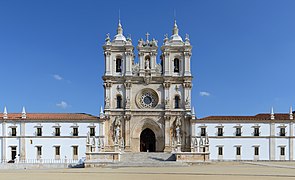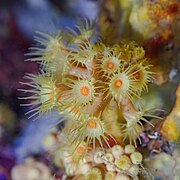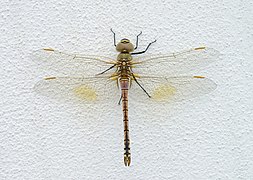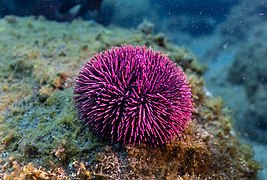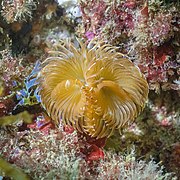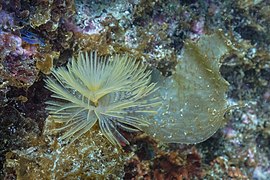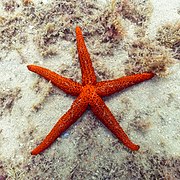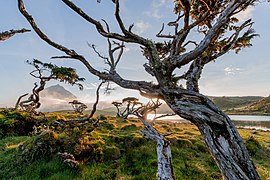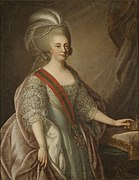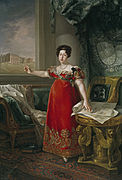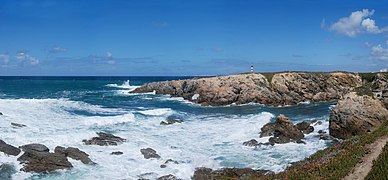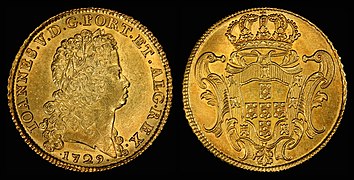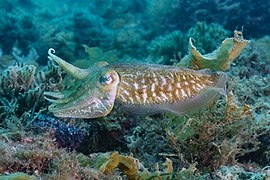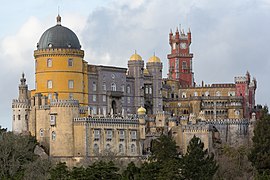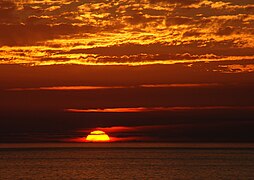Portal:Portugal
Welcome to the Portugal portal  Portugal, officially the Portuguese Republic, is a country in the Iberian Peninsula in Southwestern Europe. Featuring the westernmost point in continental Europe, to its north and east is Spain, with which it shares the longest uninterrupted border in the European Union; to the south and the west is the North Atlantic Ocean; and to the west and southwest lie the Macaronesian archipelagos of the Azores and Madeira, which are two autonomous regions of Portugal. Lisbon is the capital and largest city, followed by Porto, which is the only other metropolitan area. The western part of the Iberian Peninsula has been continuously inhabited since prehistoric times, with the earliest signs of settlement dating to 5500 BCE. Celtic and Iberian peoples arrived in the first millennium BCE, with Phoenician and later Punic influence reaching the south during the same period. The region came under Roman control in the second century BCE, followed by a succession of Germanic peoples and the Alans from the fifth to eighth centuries CE. Muslims conquered most of the Iberian Peninsula in the eighth century CE, but were gradually expelled by the Christian Reconquista over the next several centuries. Modern Portugal began taking shape during this period, initially as a county of the Christian Kingdom of León in 868, and ultimately as an independent Kingdom with the Treaty of Zamora in 1143. During the Age of Discovery, the Kingdom of Portugal established itself as a major economic and political power, largely through its maritime empire, which extended mostly along the South Atlantic and Indian Ocean coasts. Portuguese explorers and merchants were instrumental in establishing trading posts and colonies that enabled control over spices and slave trades. While Portugal expanded its influence globally, its political and military power faced internal and external challenges towards the end of the 16th century. The dynastic crisis marked the beginning of the country's political decline that led to the Iberian Union (1580-1640), a period in which Portugal was united under Spanish rule. While maintaining a degree of self-governance, the union strained Portugal’s autonomy and drew it into conflicts with European powers which targeted Portuguese territories and trade routes. Portugal's prior opulence was further exacerbated by a series of events, such as the Portuguese Restoration War and the 1755 Lisbon earthquake, which destroyed the city and damaged the empire's economy. (Full article...) Selected article -Belém Tower (Portuguese: Torre de Belém, pronounced [ˈtoʁɨ ðɨ βɨˈlɐ̃j]; literally: Bethlehem Tower), officially the Tower of Saint Vincent (Portuguese: Torre de São Vicente) is a 16th-century fortification located in Lisbon that served as a point of embarkation and disembarkation for Portuguese explorers and as a ceremonial gateway to Lisbon. This tower symbolizes Portugal's maritime and colonial power in early modern Europe. It was built during the height of the Portuguese Renaissance, and is a prominent example of the Portuguese Manueline style, but it also incorporates other architectural styles, such as the minarets, which are inspired by Moorish architecture. The structure was built from lioz limestone and is composed of a bastion and a 30-metre (100 ft), four-storey tower. Since 1983, the tower has been a UNESCO World Heritage Site, along with the Jerónimos Monastery. It is often portrayed as a symbol of Europe's Age of Discoveries and as a metonym for Portugal or Lisbon, given its landmark status. It has incorrectly been stated that the tower was built in the middle of the Tagus and now sits near the shore because the river was redirected after the 1755 Lisbon earthquake. In fact, the tower was built on a small island in the Tagus river near the Lisbon shore. (Full article...) This is a Featured article, which represents some of the best content on English Wikipedia.
Dona Maria Amélia (1 December 1831 – 4 February 1853) was a princess of the Empire of Brazil and a member of the Brazilian branch of the House of Braganza. Her parents were Emperor Dom Pedro I, the first ruler of Brazil, and Amélie of Leuchtenberg. The only child of her father's second marriage, Maria Amélia was born in France after Pedro I abdicated the Brazilian throne in favor of his son Dom Pedro II. Before Maria Amélia was a month old, Pedro I went to Portugal to restore the crown of the eldest daughter of his first marriage, Dona Maria II. He fought a successful war against his brother Miguel I, who had usurped Maria II's throne. Only a few months after his victory, Pedro I died from tuberculosis. Maria Amélia's mother took her to Portugal, where she remained for most of her life without ever visiting Brazil. The Brazilian government refused to recognize Maria Amélia as a member of Brazil's Imperial House because she was foreign-born, but when her elder half-brother Pedro II was declared of age in 1840, he successfully intervened on her behalf. (Full article...) General imagesThe following are images from various Portugal-related articles on Wikipedia.
Selected quote -"Dantas might know grammar, might know syntax, might know medicine, might know how to cook suppers for cardinals, he might know everything except how to write which is the only thing he does!"
O Dantas saberá gramática, saberá sintaxe, saberá medicina, saberá fazer ceias pra cardeais, saberá tudo menos escrever que é a única coisa que ele faz! Almada Negreiros, writer and painter This is a Good article, an article that meets a core set of high editorial standards.
Otelo Nuno Romão Saraiva de Carvalho, GCL (Portuguese pronunciation: [ɔˈtɛlu sɐˈɾajvɐ ðɨ kɐɾˈvaʎu]; 31 August 1936 – 25 July 2021) was a Portuguese military officer who was the chief strategist of the 1974 Carnation Revolution. He later became a terrorist leader. After the Revolution, Otelo assumed leadership roles in the first Portuguese Provisional Governments, alongside Vasco Gonçalves and Francisco da Costa Gomes, and as the head of military defense force COPCON. In 1976, Otelo ran in the first Portuguese presidential election, in which he placed second with the base of his support coming from the far-left. Otelo was tried and sentenced for being a leading member of the terrorist group Forças Populares 25 de Abril, which killed 19 people in several terrorist attacks. The Constitutional Court reverted the sentence due to unconstitutionality. (Full article...) Selected Biography - Francisco Manuel Lumbrales de Sá Carneiro GCTE GCC GCL (Portuguese: [fɾɐ̃ˈsiʃku sa kɐɾˈnɐjɾu] ; 19 July 1934 – 4 December 1980) was a Portuguese politician, who was one of the founders and the first leader of the Social Democratic Party (then known as the Popular Democratic Party). He served as Prime Minister of Portugal for eleven months during 1980, until his death in a plane crash in Camarate on 4 December 1980. (Full article...) Selected picture -Did you know -
Portugal topicsPortugal lists
SubcategoriesRecognized content
Featured articlesFormer featured articlesFeatured listsFormer featured listsGood articles
Former good articlesDid you know? articles
Featured pictures
Former featured portalsIn the News articles
Main page featured articles
Picture of the day pictures
Featured topicsNew articlesThis list was generated from these rules. Questions and feedback are always welcome! The search is being run daily with the most recent ~14 days of results. Note: Some articles may not be relevant to this project.
Rules | Match log | Results page (for watching) | Last updated: 2024-11-20 22:23 (UTC) Note: The list display can now be customized by each user. See List display personalization for details.
Things you can doRelated PortalsRelated WikiProjects
Associated WikimediaThe following Wikimedia Foundation sister projects provide more on this subject:
Discover Wikipedia using portals |


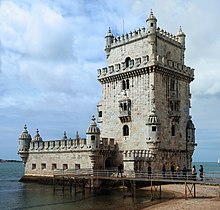






































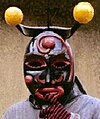


![Image 42Maios celebration in Madeira island [1] (from Culture of Portugal)](http://upload.wikimedia.org/wikipedia/commons/thumb/e/e1/2011-03-05_03-13_Madeira_045_Santana_%285543431418%29.jpg/120px-2011-03-05_03-13_Madeira_045_Santana_%285543431418%29.jpg)









